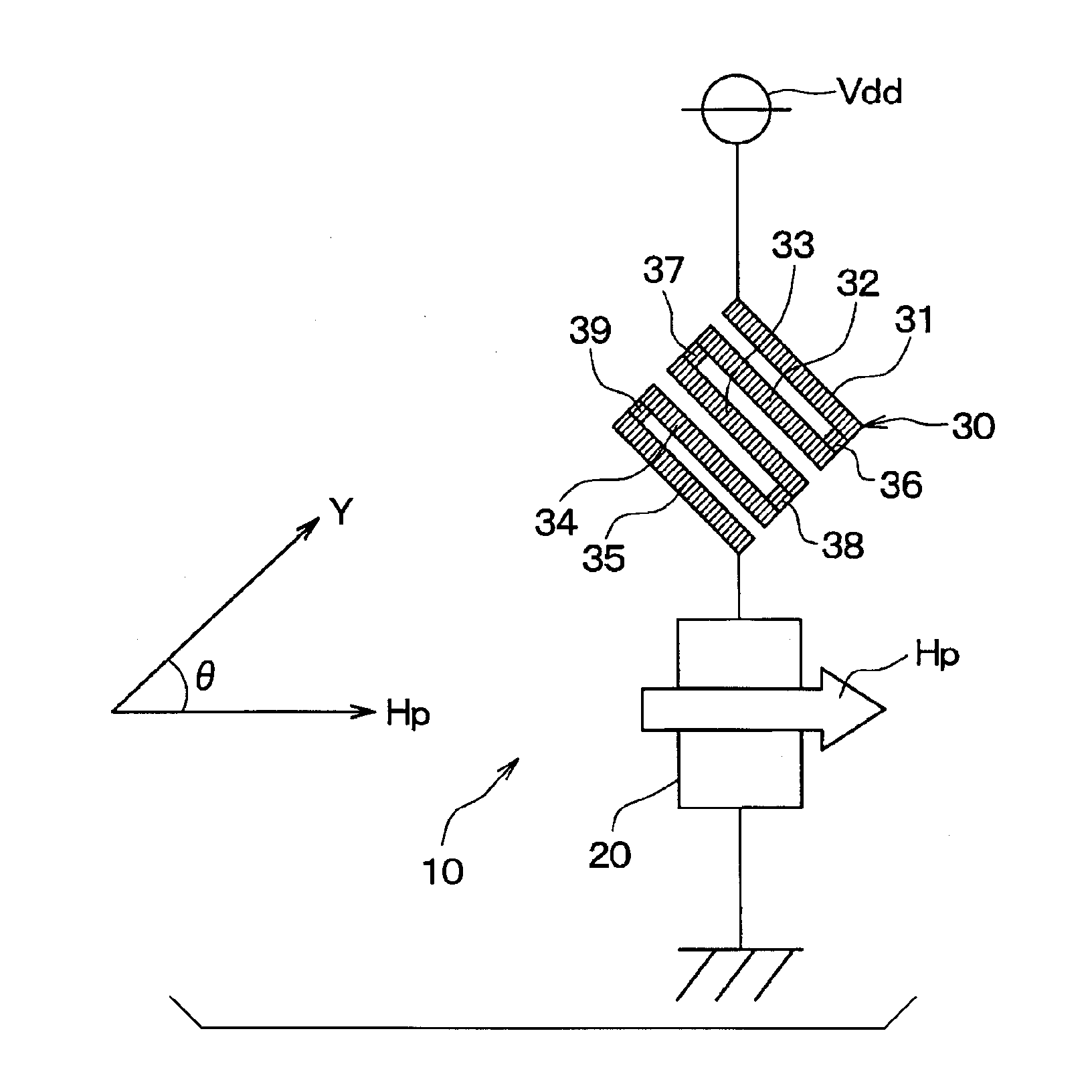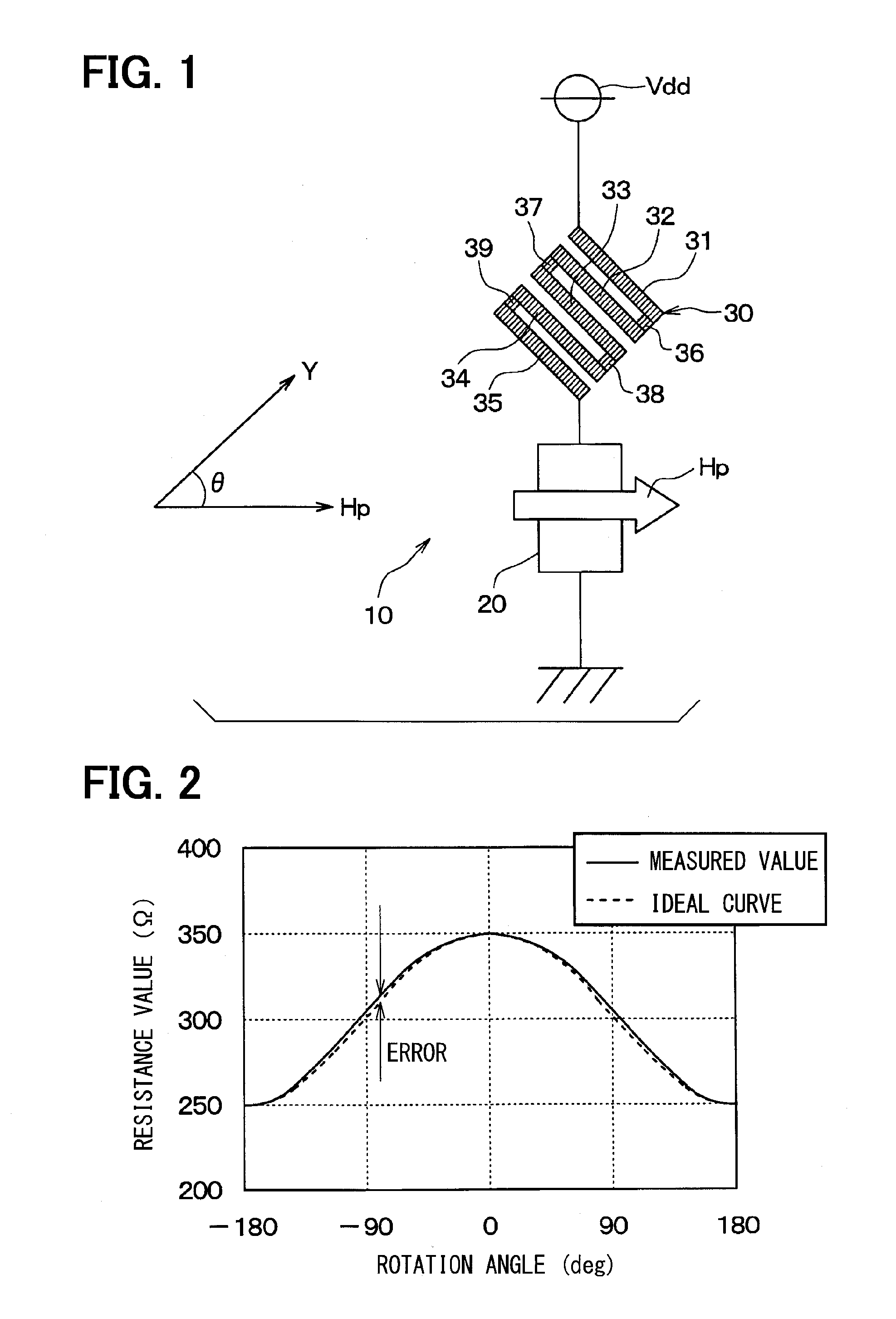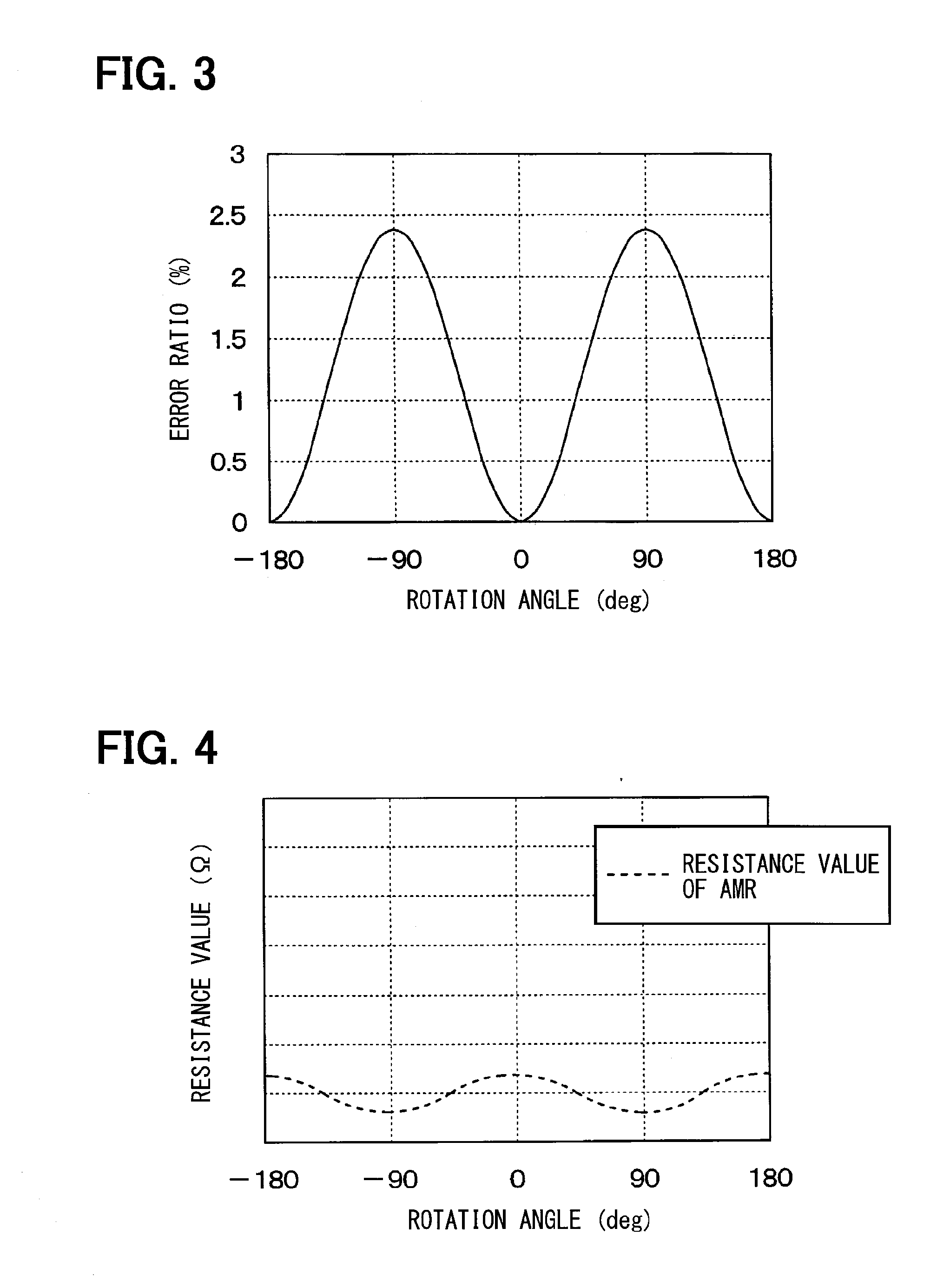Magnetic sensor
a technology of magnetic sensor and sensor, applied in the field of magnetic sensor, can solve the problems of great resistance value of corrective tmr element, and achieve the effect of increasing voltage, increasing voltage, and increasing sensitivity of magnetic sensor
- Summary
- Abstract
- Description
- Claims
- Application Information
AI Technical Summary
Benefits of technology
Problems solved by technology
Method used
Image
Examples
first embodiment
[0037]FIG. 1 shows the circuit configuration of a magnetic sensor 10 according to a first embodiment of the present disclosure. The magnetic sensor 10 includes a TMR (Tunnel Magneto-Resistance) element 20 and a corrective AMR (Anisotropic Magneto-Resistance) element 30. The TMR element 20 and the corrective AMR element 30 are series-connected between a power supply Vdd and a ground. The TMR element 20 is disposed in between the power supply Vdd and the corrective AMR element 30.
[0038]In the present embodiment, the TMR element 20 and the corrective AMR element 30 are formed in the same plane. For example, the TMR element 20 and the corrective AMR element 30 are formed to be like a membrane on an underlying insulating film formed on a substrate.
[0039]The TMR element 20 is a tunnel magnetoresistive element that includes a free layer, a pin layer, and a tunnel layer. The free layer is a ferromagnetic layer that includes a ferromagnet to detect direction Y of an external magnetic field. ...
second embodiment
[0078]The first embodiment has been described on the assumption that the magnetic sensor 10 includes one corrective AMR element 30 and one TMR element 20. A second embodiment of the present disclosure will now be described on the assumption that the magnetic sensor 10 includes two corrective AMR elements and one TMR element.
[0079]FIG. 7 shows the circuit configuration of the magnetic sensor 10 according to the second embodiment. As shown in FIG. 7, the magnetic sensor 10 according to the present embodiment includes corrective AMR elements 30a, 30b and the TMR element 20. The corrective AMR elements 30a, 30b and the TMR element 20 are series-connected between the power supply Vdd and the ground. The TMR element 20 is disposed between the corrective AMR elements 30a, 30b. The corrective AMR elements 30a, 30b are used in replacement of the corrective AMR element 30 according to the first embodiment. Characteristics of the corrective AMR elements 30a, 30b are the same as those of the co...
third embodiment
[0084]The first embodiment has been described on the assumption that the TMR element 20 and the corrective AMR element 30 are formed in the same plane. A third embodiment of the present disclosure will now be described on the assumption that the TMR element 20 and the corrective AMR element 30 are formed in different planes.
[0085]As shown in FIG. 8, the third embodiment is configured so that the TMR element 20 and the corrective AMR element 30 are formed in opposing layers via an insulating layer 25. Referring to FIG. 8, the TMR element 20 is formed forward of the insulating layer 25, whereas the corrective AMR element 30 is formed rearward of the insulating layer 25.
[0086]Further, in the present embodiment, the TMR element 20 and the corrective AMR element 30 are disposed to overlap each other. Therefore, the present embodiment makes it possible to reduce the area of the magnetic sensor 10.
PUM
 Login to View More
Login to View More Abstract
Description
Claims
Application Information
 Login to View More
Login to View More - R&D
- Intellectual Property
- Life Sciences
- Materials
- Tech Scout
- Unparalleled Data Quality
- Higher Quality Content
- 60% Fewer Hallucinations
Browse by: Latest US Patents, China's latest patents, Technical Efficacy Thesaurus, Application Domain, Technology Topic, Popular Technical Reports.
© 2025 PatSnap. All rights reserved.Legal|Privacy policy|Modern Slavery Act Transparency Statement|Sitemap|About US| Contact US: help@patsnap.com



